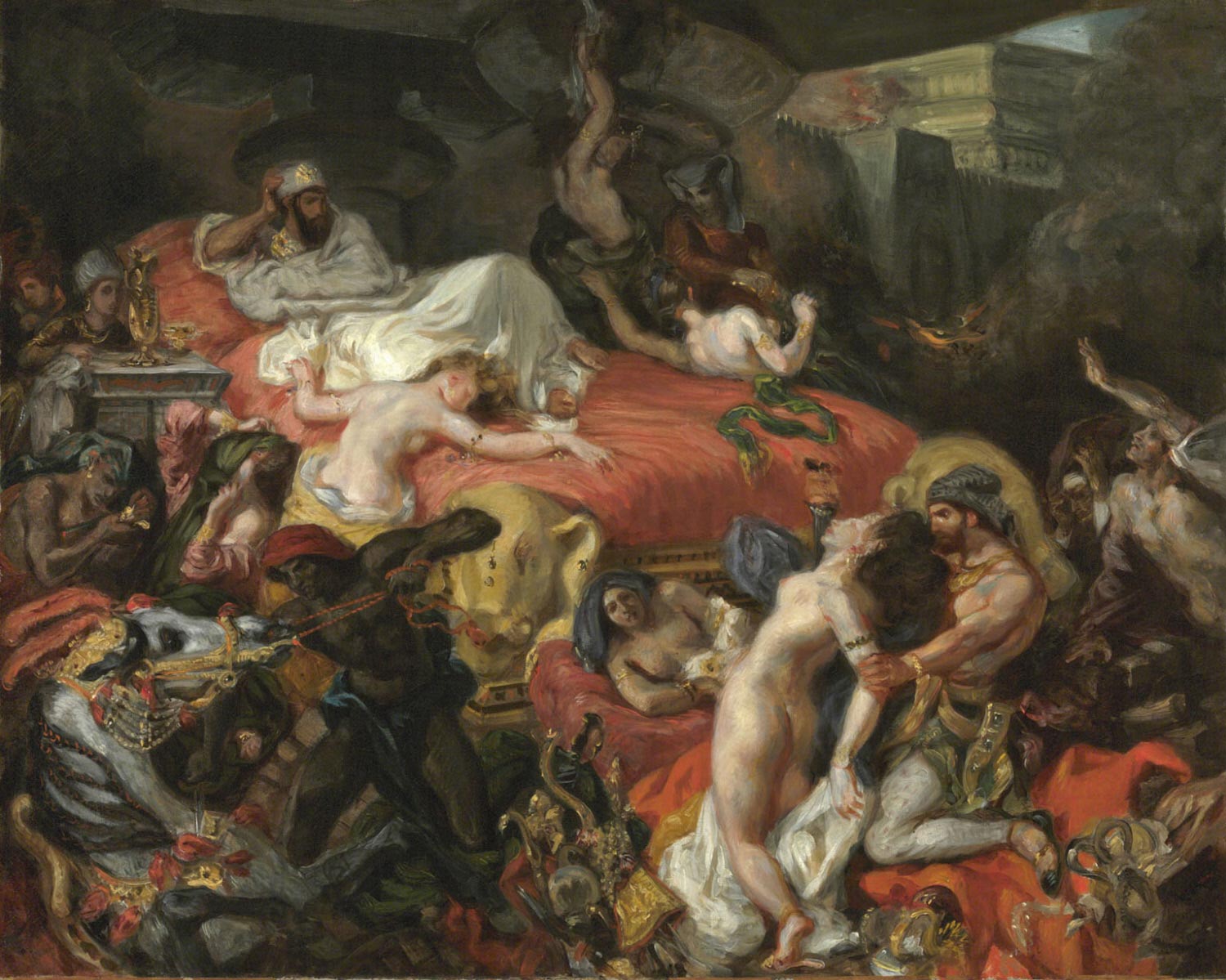On this day in 1798 Ferdinand Victor Eugène Delacroix, a French Romantic artist regarded from the outset of his career as the leader of the French Romantic school, was born. On this occasion we present one of his most famous paintings. :)
The subject of this painting was inspired by Lord Byron's dramatic poem of 1821 about the life of an ancient Assyrian king named Sardanapalus. Finding his palace besieged by enemies, Sardanapalus decides to kill himself, but first orders his officers to destroy all his favorite possessions in his presence—his wives, pages, and even his horses and dogs. Delacroix first exhibited this painting in the Salon of 1827–28, where it received harsh criticism.
Delacroix’s Death of Sardanapalus was controversial and polarizing for one significant reason: it was not a Neoclassical painting. Delacroix’s main figural subject was Sardanapalus, a king willing to destroy all of his possessions in a funerary pyre of gore and excess, including people and luxurious goods.. This man was not a hero. Delacroix’s Sardanapalus was the antithesis of neoclassical traditions, which favored subdued colors, rigid space, and an overall moral subject matter. He also used foreshortening to tilt the death scene directly into the space of the audience, a far cry from the subdued order of traditional academic paintings. One of the critics even called the painting "the fanaticism of ugliness."
This painting is a replica of a much larger work, now in the Musée du Louvre. Delacroix may have painted this Museum's version for himself before selling the larger work in 1846.
Until July 23, 2018, at the Louvre you can see the great monographic exhibition of his works. The exhibition later will be shown at the Metropolitan Museum of Art. It's one of the most important exhibitions of this year!
We encourage you to read about the best-known work of the artist "Liberty Leading The People" in today's article in DailyArt Magazine.


 Eugène Delacroix
Eugène Delacroix